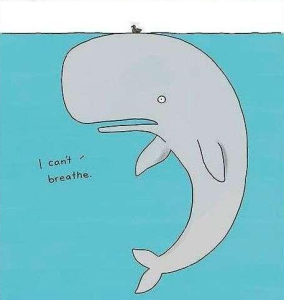A lot of discussion on customer service centers around the warm, fuzzy subjects of how we can make our customers feel connected to us, feel our devotion to them, how we can establish relationships with them that convey, “Hey, when things go south, don’t worry, we’ll be here for you”. But what about when things do go south? What should we be doing, consistently, in problem situations to show that we live up to the expectations we’ve previously set? Let’s look at a customer experience as a case study.
[fusion_builder_container hundred_percent=”yes” overflow=”visible”][fusion_builder_row][fusion_builder_column type=”1_1″ background_position=”left top” background_color=”” border_size=”” border_color=”” border_style=”solid” spacing=”yes” background_image=”” background_repeat=”no-repeat” padding=”” margin_top=”0px” margin_bottom=”0px” class=”” id=”” animation_type=”” animation_speed=”0.3″ animation_direction=”left” hide_on_mobile=”no” center_content=”no” min_height=”none”]

Image by Bernard Goldbach
Glenn has been suffering from seasonal allergies. In a fit of congested misery, he sought out an online company and purchased a pair of air purifiers, hoping for some relief. After anxiously awaiting their arrival, he excitedly set one up and prayed for a respite from his misery. However, his unit did not seem to be functioning all that well.
He instantly became nervous, fearing that he’d have to deal directly with the manufacturer or a dismissive retailer. Would they trust his assessment that the air didn’t seem to be noticeably different? That felt kind of subjective, so his anxiety only heightened, expecting to be in for a long slog in proving to the company that his observation was correct, or at least valid.
However, when Glenn called the retailer, he had a very different experience.
Upon briefly telling the first representative about his problem, she quickly informed him that she did not have enough knowledge to troubleshoot his issue, but another department did. He was immediately transferred directly to another person (not a queue) who listened attentively to his observations and misgivings about the product. After hitting upon a few obvious potential causes of the problem and ruling them out, the representative requested that Glenn unpack and test the additional unit to compare the operation of the two.
He also assured Glenn that, if neither lived up to his expectations, they would both be cheerfully replaced with something more suitable to his expectations. If the one was malfunctioning, it could be replaced for an identical unit or another of his choosing. Glenn was instantly relieved by how painless the conversation was. It didn’t require endless troubleshooting or proving his misgivings, his concerns were taken at face value and met with friendly responses. He felt cared for and understood. What he expected to be an uphill battle was instead delightfully reasonable and without incident. The icing on the cake was finding a follow-up email later that day with a summary of his case and a case number for any and all future conversations about his issue.
Glenn quickly went from being a customer with looming regrets for having purchased rather expensive items off the internet from a company he had no direct knowledge of, to a customer who was patently satisfied with his experience despite a potentially faulty piece of expensive equipment. This transformation highlights the critical nature of customer service. Our interactions with our customers is what actually creates lasting opinions (and the reputations) of our companies.[/fusion_builder_column][/fusion_builder_row][/fusion_builder_container]
